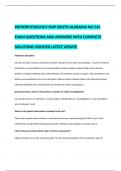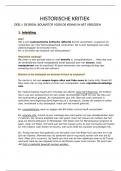Exam (elaborations)
PATHOPHYSIOLOGY DNP SOUTH ALABAMA NU 545 EXAM QUESTIONS AND ANSWERS WITH COMPLETE SOLUTIONS VERIFIED LATEST UPDATE
- Course
- Institution
PATHOPHYSIOLOGY DNP SOUTH ALABAMA NU 545 EXAM QUESTIONS AND ANSWERS WITH COMPLETE SOLUTIONS VERIFIED LATEST UPDATE Metabolic absorption All cells can take in and use nutrients and other substances from their surroundings. 1. Cells of intestines and kidneys are specialized to carry out absorption....
[Show more]




